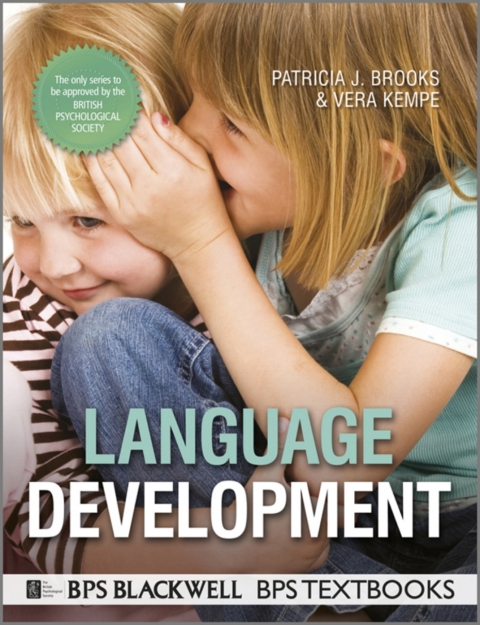Description
Efnisyfirlit
- Title Page
- Copyright
- Brief Contents
- Contents
- Acknowledgements
- Chapter 1: What Enables Infants to Acquire Language?
- 1.1: What is the evolutionary context of language development?
- 1.2: What are the abilities of language-ready newborns?
- Summary
- Further Reading
- Chapter 2: What do Infants Learn Before they Speak their First Word?
- 2.1: What is there to learn?
- 2.2: What are the linguistic abilities of newborns?
- 2.3: How do infants discover the sounds of language?
- 2.4: How do infants discover words?
- Summary
- Further Reading
- Chapter 3: How does Social and Cognitive Development Support Language Development?
- 3.1: What do infants learn from interacting with others?
- 3.2: What do infants learn about the world?
- 3.3: What is the role of gestures in language development?
- Summary
- Further Reading
- Chapter 4: How do Children Learn Words?
- 4.1: How does social interaction support word learning?
- 4.2: When do children learn their first words?
- 4.3: How is the child’s vocabulary organised?
- 4.4: How do children learn so many words in such short time?
- Summary
- Further Reading
- Chapter 5: How do Children Learn to Combine and Modify Words?
- 5.1: Where does grammatical knowledge come from?
- 5.2: Can infants learn about grammar before they even start to speak?
- 5.3: How do children learn to combine and modify words?
- 5.4: Why do children make grammatical errors and how do they stop?
- Summary
- Further Reading
- Chapter 6: What Kind of Language do Children Encounter?
- 6.1: How do we address children?
- 6.2: What are the functions of child-directed speech?
- 6.3: Do differences in language input affect language development?
- Summary
- Further Reading
- Chapter 7: How do Children Learn to Use Language?
- 7.1: How do children develop communicative competence?
- 7.2: Do boys and girls differ in how they learn and use language?
- Summary
- Further Reading
- Chapter 8: How does Language Development Affect Cognition?
- 8.1: How does using language support cognitive development?
- 8.2: Does it matter which language children learn?
- 8.3: Does it matter how many languages children learn?
- Summary
- Further Reading
- Chapter 9: What is the Role of Literacy in Language Development?
- 9.1: How do children learn to read and write?
- 9.2: How does literacy affect language development?
- 9.3: Why is learning to read difficult for some children?
- Summary
- Further Reading
- Chapter 10: What Causes Language Impairments?
- 10.1: What are the symptoms of Specific Language Impairment?
- 10.2: Which children are at risk for Specific Language Impairment?
- 10.3: What might explain Specific Language Impairment?
- Summary
- Further Reading
- Chapter 11: How do Deaf Children Acquire Language?
- 11.1: Are sign languages acquired differently from spoken languages?
- 11.2: How does partial restoration of hearing affect language development?
- 11.3: Can deaf children create their own communication systems?
- Summary
- Further Reading
- Chapter 12: How does Language Development Affect the Brain?
- 12.1: Which areas of the brain process language?
- 12.2: When does neural specialisation for language develop?
- 12.3: Is there a critical period for language development?
- Summary
- Further Reading
- Glossary
- References
- Name Index
- Subject Index





